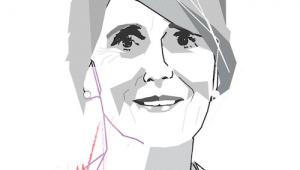18 August 2006
The government wants savings, and e-auctions could help to deliver them. They save time, money and encourage joined-up working, if used in the right context, as Justin Pugsley explains
A revolution is sweeping the public sector that promises to shake up the way procurement is delivered, with some hefty savings thrown into the bargain. This shake-up is being underpinned by Internet technologies, new work practices and the government's determination to manage itself more efficiently.
A central pillar of this procurement revolution is the 'e-auction' or reverse auction – a process where qualified bidders anonymously compete against each other for a contract, with the one offering the lowest price winning. Using the Internet, price discovery can be done in a matter of hours, rather than weeks or months, as with traditional paper-based methods.
Auctions come at the end of the procurement process and are simply a means of setting the price. There are two types of auction: one based solely on price, the other on weighted price. The latter is designed to take into account factors such as after-sales service, quality and so on.
The process is particularly suited to commodity-type items in a competitive context. In the public sector, they have been used for procuring a wide range of goods and services, including stationery, IT equipment, agency staff, fleet hire, even salt for the roads.
The whole move towards e-procurement, of which e-auctions are a part, was spurred on by the Gershon Review, which was primarily concerned with modernising government and making it more efficient.
Its targets include saving £21.5bn for the spending period up to 2007/08, with local government expected to deliver £6.45bn of this. To achieve these targets, Sir Peter Gershon recommended, for example, relocating some civil servants, introducing back-office efficiencies, more standardisation, direct transaction processing and more automation.
One recommendation was key to e-auctions. This was for the 'development of a common cross-governmental strategic framework to consolidate procurement activities to identify and apply key values from using standard procurement'.
Stephen Timms, the chief secretary to the Treasury, is certainly a convert to the concept. He recently told delegates at the Government Computing Expo that an average e-auction costs £10,000 to carry out, but delivers £800,000 in savings – a staggering return on investment. Indeed, Timms promised to promote the wider use of the technology and sees it playing an important role in shaving £8bn off procurement costs by 2008.
According to the Regional Centres of Excellence, the first wave of e-auctions delivered average savings of 27% on the baseline cost. Nine auctions were held for the period 2005/06 and showed savings of nearly £13m on an outlay of £137,000.
The RCEs expect that £250m of local government contracts will be tendered that way this year. Indeed, the technology is catching on, with a number of initiatives spreading across the public sector.
E-procurement and e-auctions were given a boost in January when the government coded European Union regulations governing their conduct for public sector organisations and utilities into UK law.
Essentially, the new regulations provided much- needed clarification as to how e-auctions should be conducted. For example, it set out that the results are legally binding and established the process for selecting bidders. According to industry sources, this has given the technology a long-term fillip, as procurement officers now have an established legal framework in which to operate.
'You have huge overlaps in procurement. For example, you might have 50 to 60 different photocopier contracts being done across the country's 388 local authorities,' says David Pointon, head of procurement at Portsmouth City Council. 'The whole thing has grown organically and is not part of an overall strategy.'
But this appears to be changing. Various public sector bodies – whether NHS trusts, schools, government departments or local councils – are forming consortiums and trade portals. 'The boundaries between local and central government are evaporating and we're all opening our eyes to find we're doing similar things,' says Pointon.
The public sector has had considerable success with buying computer equipment by e-auction. 'The auction programme has so far identified £14m in cashable savings against a baseline spend of £44.72m, a run rate of 31.3%,' explains Chris Chettle, project manager for IT hardware and e-auctions with the Office of Government Commerce's Buying Solutions. 'These savings were made over five auctions, with 35 lead procurement organisations participating. The real achievement was to get all these different participants to agree on common specifications, timescales and procurement processes.'
Interestingly, the most recent auction conducted under the new EU regulations generated a particularly large saving of about 40%. Chettle says that this is because suppliers knew the result was binding – something that didn't always occur before the new rules – and therefore made an extra effort to win the auction.
In terms of buying IT equipment, there are limitations when using the technology for central government, as so much is now outsourced.
However, Chettle says the OGC will investigate ways of working with private contractors to bring down costs by using e-auctions.
Another project plans to use auction results as benchmarks to guide procurement officers on what prices they should be paying for equipment.
In the meantime, the OGC is looking to apply reverse auctions for procuring building products and services. 'The goods I'm interested in are buried several layers down the supply chain in what are loosely called commodities,' says Bruce Hartley, director of construction and facilities management with OGC Buying Solutions.
Indeed, this initiative, set up in February, is an opportunity for local authorities to get involved in buying building and housing materials. The theory is that their combined buying power could outweigh those of even the largest private company, and this should translate into cheaper materials.
The first auction is expected to kick off next month. Items under the e-hammer include boilers, bathroom suites, furniture and kitchens. It will be part of a four-year framework agreement, now being drafted, through which billions of pounds worth of goods will be purchased for the decent homes programme, which is designed to increase the quality of public housing.
The Northern Housing Project, an arm's-length management organisation involving 75 local authorities, will act as the contracting authority. The benefit is that each individual tender or auction will not need to be advertised in the Official Journal of the European Union. The process happens just once for the entire framework, saving time and money.
Meanwhile, North Tyneside Council went ahead with its own pioneering housing materials e-auction in June. 'The authority introduced electronic tendering for the renewal of 27 contracts related to bringing homes up to the decent homes standard,' the council says. It is set to invest £113m over the next four years in an effort to improve local council homes.
Andrew Kerr, the council's chief executive, considers e-auctions an ideal way to deliver efficiencies without compromising quality. On UPVC windows and doors alone, the council saved £6m.
Without a doubt, e-auctions are an excellent way of facilitating collaborative purchasing. They help drive down prices and shorten the procurement process. However, like any technique, they have their limitations. They are not particularly suited to more complex contracts, and to really work they require a large enough spend, which of course supports the case for collaboration.
E-auctions also require standardisation, which inevitably narrows choice. This demands a certain amount of compromise from participants. Also, many of the big savings could be one-off gains. Indeed, once the lowest price is discovered for a certain volume of goods, it is unlikely that any further dramatic price falls can be achieved.
For many goods and services, the process will tend to favour large suppliers with the necessary economies of scale. In some cases, suppliers have been reluctant to tender through e-auctions, fearing for their profit margins. However, for the right items and used in the right way, they are valuable tools, helping procurement officers to deliver better value for money to taxpayers.
PFaug2006



















